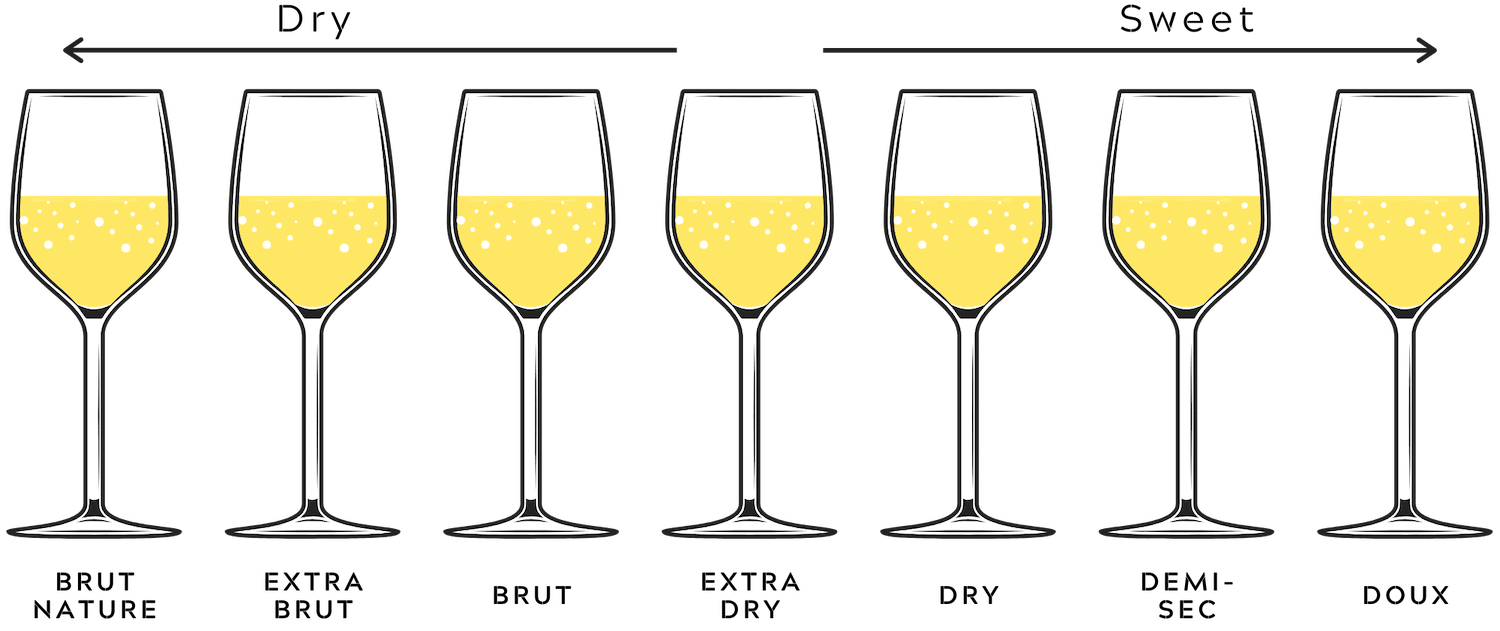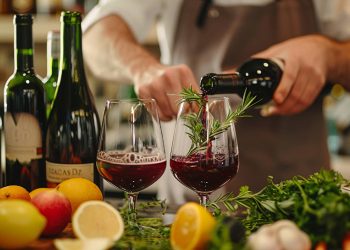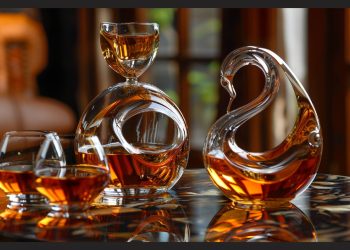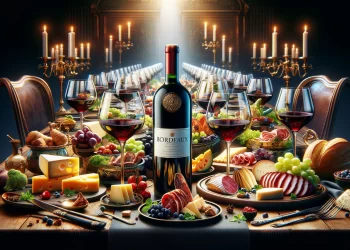Indulge in the effervescent world of sweet champagnes with ‘Sweet Champagne 101’. Join us on a captivating journey as we uncover the hidden delights and nuances of these exquisite beverages. From the renowned champagne houses to the production process, we leave no stone unturned in our quest to find the perfect bubbly for your every occasion. Immerse yourself in the flavors, aromas, and characteristics that define these champagnes, and let us guide you towards making an informed choice. Welcome to a realm of belonging and celebration.
What is Champagne? Champagne for Beginners
What are the key characteristics and qualities of Champagne that make it a unique and sought-after sparkling wine? Champagne is a sparkling wine that is renowned for its elegance, sophistication, and celebratory nature. It is produced in the region of Reims and has an alcohol content of 12% ABV. Champagne is made from a blend of 40% chardonnay, 35% pinot noir, and 25% pinot meunier grapes, which contribute to its distinct flavor profile.
When it comes to sweetness, Champagne ranges from dry to sweet, with demi-sec and doux being the sweetest types. Sweet Champagne brands such as Taittinger Demi-Sec Champagne and Billecart-Salmon Demi-Sec Champagne offer a perfect balance of sweetness and refreshing acidity, making them ideal choices for special occasions and celebrations.
The Unknown History of Champagne
Continuing our exploration of Champagne, let us delve into the intriguing and lesser-known history of this iconic sparkling wine. Champagne has a rich and fascinating history that dates back centuries. It was first discovered by accident, as winemakers in the Champagne region of France encountered a natural fermentation process that caused the wine to become effervescent. This unique characteristic became highly sought after, and Champagne quickly gained popularity among the French aristocracy and European royalty. Over time, the production methods and techniques were refined, leading to the creation of the distinct and luxurious beverage we know today.
The sweetness of Champagne has also evolved over time, with a champagne sweetness scale ranging from the driest (Brut) to the sweetest (Doux). Today, there are many options available for those seeking sweet champagne, ranging from affordable options to more expensive and complex varieties. Whether you prefer a sweet tasting champagne or are looking for a sweet champagne that is cheap, there is a wide range of choices to suit your preferences.
Every Type Of Champagne Explained
One important aspect of understanding sweet Champagne is to familiarize oneself with the various types of Champagne and their production process. To help you navigate the world of sweet Champagne, here are four key types and their characteristics:
- Demi-Sec Champagne: This type of Champagne has a higher level of sweetness and is perfect for those who prefer a sweeter flavor profile. It pairs well with desserts and is often enjoyed during celebrations.
- Doux Champagne: Doux Champagne is the sweetest variety, with a higher sugar content. It offers a rich and indulgent taste, making it a great choice for special occasions or as a dessert replacement.
- Sec Champagne: Sec Champagne falls in the middle of the sweetness scale. It has a balanced sweetness and is versatile enough to pair with a range of dishes.
- Extra Dry Champagne: Despite its name, Extra Dry Champagne is actually slightly sweeter than Brut Champagne. It offers a touch of sweetness while still maintaining a crisp and refreshing character.
When exploring the world of sweet Champagne, consider trying brands like Billecart-Salmon, Veuve Clicquot, Ruinart, and Taittinger, known for their excellent offerings in this category.
Styles of Champagne
Champagne, the world-renowned sparkling wine, is celebrated for its diversity and complexity. Among its various styles, four distinct types stand out, each offering a unique experience to the palate. These include:
- Non-Vintage (NV) Champagne: The most common and accessible style, Non-Vintage Champagne is a blend of wines from different years. This blending achieves a consistent house style, balancing freshness and complexity. It’s perfect for those new to Champagne or seeking a reliable, high-quality experience.
- Vintage Champagne: Produced only in exceptional years, Vintage Champagne is made exclusively from grapes harvested in the same year. These Champagnes are aged longer and exhibit a more complex and nuanced character. They are ideal for special occasions or for those who appreciate the subtleties of a specific harvest.
- Rosé Champagne: Gaining popularity for its elegant pink hue and vibrant flavors, Rosé Champagne is made either by blending red and white wines or through the saignée method, where the juice is left in contact with the red grape skins for a short time. It pairs beautifully with a variety of dishes, from seafood to light meats.
- Prestige Cuvée: The pinnacle of a Champagne house’s range, Prestige Cuvées are made from the finest grapes, often from the best vineyards. These Champagnes, like Dom Pérignon or Louis Roederer’s Cristal, are synonymous with luxury and are crafted with exceptional care and attention to detail.
- Demi-Sec and Doux: For those with a sweeter palate, Demi-Sec (moderately sweet) and Doux (the sweetest Champagne category) offer a delightful balance of sweetness and acidity. These styles are excellent with desserts or as a standalone treat for a celebratory toast.
Each style of Champagne brings its own unique qualities and is suited to different tastes and occasions. Whether you prefer the consistent elegance of a Non-Vintage, the specific expression of a Vintage, the romantic allure of a Rosé, the luxury of a Prestige Cuvée, or the sweetness of a Demi-Sec or Doux, Champagne offers a style to satisfy every preference.
Decoding Champagne Terms Terms Like Brut, Demi-Sec, Vintage, and Cuvée Really Mean
To fully understand and appreciate sweet Champagne, it is essential to decode the terms like Brut, Demi-Sec, Vintage, and Cuvée that are often used to describe these exquisite sparkling wines. These terms provide valuable information about the sweetness levels, production methods, and quality of the Champagne. Here is a breakdown of what each term means:
| Term | Description |
|---|---|
| Brut | The driest and most common style of Champagne, with minimal residual sugar. It pairs well with a wide range of dishes. |
| Demi-Sec | A semi-sweet Champagne with a touch of sweetness, making it ideal for pairing with desserts or as an after-dinner drink. |
| Vintage | Indicates that the Champagne is made from grapes harvested in a specific year, showcasing the unique characteristics of that vintage. |
| Cuvée | Refers to a blend of different wines to create a Champagne with a consistent flavor profile and high-quality standards. |
Understanding these terms will help you navigate the world of sweet Champagne and choose the perfect bottle for any occasion. Refer to the champagne sweetness chart to determine the level of sweetness that suits your preferences. Whether you prefer a brut Champagne for its dryness or a demi-sec Champagne for its sweeter taste, there is a wide range of options to explore and enjoy.
Champagne Sweetness Levels

Moving on to the topic of Champagne sweetness levels, it is important to understand the range of sweetness offered by different Champagnes to find the perfect bottle for your taste preferences. Sweet Champagne is a popular choice for celebrations, brunches, and special occasions. When it comes to Champagne sweetness levels, they can range from extra brut (bone-dry) to doux (very sweet). For those who prefer a sweeter Champagne, demi-sec and doux are the ideal choices.
These Champagnes have a higher sugar content and offer a luscious and indulgent taste. They pair well with desserts, and can also be used to make sweet Champagne cocktails like mimosas. Some of the best sweet Champagnes include Billecart-Salmon Demi-Sec, Veuve Clicquot Demi-Sec, and Laurent-Perrier Harmony Demi-Sec. So, if you’re wondering what Champagne is sweet, look for labels that indicate demi-sec or doux for a delightful and decadent experience.
Here’s the Champagne Sweetness Level Chart for you:
| Sweetness Level | Sugar Content (g/L) | Description |
|---|---|---|
| Brut Nature | 0-3 | The driest Champagne with almost no added sugar. Also known as Brut Zero. |
| Extra Brut | 0-6 | Very dry, with a hint of sweetness. Less dry than Brut Nature. |
| Brut | Less than 12 | Dry, but with a higher level of sweetness than Extra Brut. Most common style. |
| Extra Dry/Extra Sec | 12-17 | Slightly sweeter than Brut, despite the name. Has a subtle sweetness. |
| Dry/Sec | 17-32 | Noticeably sweet, great for those who enjoy a touch of sugar. |
| Demi-Sec | 32-50 | Sweet, making it a perfect match for desserts or rich foods. |
| Doux | More than 50 | The sweetest type of Champagne, often enjoyed as a dessert wine. |
Champagne Production Process
To fully understand sweet Champagne, it is important to explore the production process and the different styles of Champagne. The Champagne production process involves specific steps, such as the selection of grapes, fermentation, blending, and aging. Each type of Champagne has its own unique characteristics and flavor profile, making it essential to delve into the production process to appreciate the diverse range of sweet Champagnes available.
Pairing Champagne With Food
When it comes to pairing Champagne with food, there are several points to consider. Sweet Champagne can be a great complement to seafood dishes, as the acidity and sweetness can balance the flavors. It can also enhance the flavors of meat and poultry, and pair well with a variety of cheeses. Additionally, the sweetness of Champagne can help to counteract the heat of spicy foods, and it can be a delightful accompaniment to desserts.
Sweet Champagne with Seafood
Sweet Champagne is a delightful choice for pairing with seafood. The effervescence and sweetness of the champagne complement the delicate flavors of seafood, creating a harmonious and enjoyable dining experience. Here are four reasons why sweet champagne is the perfect match for seafood:
- Enhances the flavors: The sweetness of the champagne enhances the natural flavors of seafood, bringing out the subtle nuances of the dish.
- Refreshes the palate: The bubbles in sweet champagne cleanse the palate, refreshing it between bites of seafood and ensuring every bite is as enjoyable as the first.
- Balances richness: Seafood dishes can sometimes be rich and buttery. The sweetness of the champagne cuts through the richness, providing a balanced and satisfying taste.
- Versatile pairing: Sweet champagne pairs well with a variety of seafood, from delicate shellfish like oysters and crab to rich and fatty fish like salmon and tuna.
When choosing a sweet champagne to pair with seafood, look for options such as Laurent-Perrier Harmony Demi-Sec Champagne or Pol Roger Réserve Brut Champagne. These champagnes strike the perfect balance of sweetness and acidity, elevating your seafood dining experience.
Sweet Champagne with Meat & Poultry
To continue exploring the versatility of sweet Champagne, it is time to delve into pairing this delightful sparkling wine with meat and poultry dishes. When it comes to pairing sweet Champagne with meat and poultry, the key is to find a balance between the rich flavors of the dish and the sweetness of the wine. One of the best sweet Champagnes to pair with meat and poultry is a demi-sec Champagne.
Demi-sec is a term used to describe a sweet Champagne, and it pairs well with dishes that have a touch of sweetness, such as glazed ham or roasted duck with fruit sauce. The sweetness of the Champagne complements the flavors of the meat and adds a refreshing contrast. So, when it comes to pairing sweet Champagne with meat and poultry, look for a demi-sec Champagne for the best results.
Sweet Champagne withCheese Pairing
Continuing the exploration of the versatility of sweet Champagne, pairing this delightful sparkling wine with cheese creates a harmonious balance of flavors. Here are four delightful combinations to try:
- Brie with Sweet Champagne: The creamy and buttery texture of Brie complements the sweet notes of the Champagne, creating a rich and indulgent pairing.
- Blue Cheese with Sweet Champagne: The bold and tangy flavors of blue cheese are beautifully balanced by the sweetness of the Champagne, creating a contrast that is both unique and satisfying.
- Goat Cheese with Sweet Champagne: The fresh and tangy flavors of goat cheese are enhanced by the sweetness of the Champagne, creating a refreshing and lively combination.
- Gouda with Sweet Champagne: The nutty and caramel-like flavors of Gouda pair perfectly with the sweet pink Champagne, creating a decadent and luxurious experience.
Whether you’re enjoying a casual gathering or a special occasion, these cheese and sweet Champagne pairings will elevate your tasting experience. Cheers to the perfect union of flavors!
Sweet Champagne with Spicy Foods
When pairing sweet Champagne with spicy foods, the complex flavors of the Champagne complement the fiery heat of the dishes, creating a tantalizing fusion of taste sensations. Sweet Champagne, with its balance of sweetness and acidity, provides a refreshing contrast to the spiciness of the food. The effervescence of the Champagne helps to cleanse the palate and enhance the flavors of the dish.
When selecting a sweet Champagne to pair with spicy foods, look for champagne types that are labeled as sweet or demi-sec. Some of the best sweet Champagnes to consider include Billecart Salmon Demi Sec Champagne, Veuve Clicquot Demi-Sec, and Taittinger Demi-Sec Champagne. These champagnes offer a delightful blend of sweetness and refreshing acidity, making them perfect companions for spicy dishes.
Champagne Dessert Pairing
For a harmonious pairing of Champagne with desserts, explore the delightful world of Champagne dessert pairing. This exquisite combination of sweet champagne and delectable treats can elevate your dining experience to new heights. Here are four delightful options to consider:
- Brut Champagne Sweet: A classic choice, Brut Champagne offers a perfect balance of sweetness and acidity. Its crisp and refreshing nature complements a wide range of desserts, from fruit tarts to creamy custards.
- Asti Champagne Sweet: Known for its vibrant and fruity flavors, Asti Champagne is an excellent choice for pairing with desserts. Its natural sweetness and effervescence enhance the flavors of fruity desserts like berry pavlova or peach cobbler.
- Sweet Champagne Moet: Moet & Chandon’s sweet champagne is a luxurious option for dessert pairing. With its rich and indulgent character, it pairs beautifully with decadent chocolate desserts or creamy caramel treats.
- Demi-Sec Champagne: Demi-Sec Champagne, with its slightly sweeter profile, is a fantastic choice for desserts. Its subtle sweetness and delicate bubbles complement desserts like crème brûlée or lemon meringue pie.
Explore the world of Champagne dessert pairing and indulge in the perfect harmony of flavors. Cheers to a sweet ending!
Food to avoid with Champagne
To ensure a harmonious pairing of Champagne with food, it is important to consider the types of dishes that may not complement the flavors and characteristics of this sparkling wine. While Champagne is a versatile beverage that can complement a wide range of dishes, there are certain foods that may not pair well with its sweet and delicate flavors. It is generally recommended to avoid pairing Champagne with heavy and strongly flavored dishes, such as spicy curries or heavily seasoned meats. Additionally, foods that are excessively sweet, such as rich chocolate desserts, may overpower the subtle sweetness of Champagne.
To fully appreciate the nuances of sweet Champagne, it is best to pair it with light and delicate dishes, such as fresh seafood, creamy cheeses, or light fruit-based desserts. By avoiding certain foods that may clash with the flavors of sweet Champagne, you can ensure a delightful dining experience.
Champagne for Special Occasions
When it comes to special occasions, selecting the right champagne is essential. Knowing how to buy sweet champagne and understanding the different options available can help make the celebration memorable. In this section, we will explore some of the best sweet champagne choices, including popular picks and pink champagnes, to help you find the perfect bubbly for your special event.
Ah, the harmonious blend of rock and wine! As we journey through the world of sweet champagnes, let’s take a moment to indulge in another sensory delight. Picture this: a glass of lusciously sweet champagne in hand, the effervescent bubbles dancing to the rhythm of your heartbeat, and in the background, the soul-stirring tunes of “The Monomes” playing their hit “Sweet Champagne”.
So, let’s raise our glasses and let “Sweet Champagne” serenade our senses. As the music fills the air, let it remind us of the vibrant notes and the delicate sweetness that only the best champagnes can offer. Here’s to the perfect pairing of rock and wine.
Which Champagne Is Sweet? Some Best Ones
Continuing the exploration of sweet Champagne options for special occasions, there are several exceptional choices that offer a delightful balance of sweetness and refreshing acidity. When it comes to sweet Champagne, it’s important to find the right balance of flavors. Some of the best options include Billecart Salmon Demi Sec Champagne, Veuve Clicquot Demi-Sec, Perrier-Jouet Nuit Blanche Demi-Sec, Ruinart R de Ruinart Demi-Sec, Taittinger Demi-Sec Champagne, and Nicolas Feuillatte Demi-Sec Champagne.
These champagnes are known for their perfect blend of sweetness and acidity, offering a delightful mix of fruity and floral flavors. Crafted by prestigious champagne houses, they are popular choices for special occasions and celebrations. So, if you’re looking for a good sweet champagne, these options are definitely worth considering.
10 Most Popular Sweet Champagnes
For special occasions, the most popular sweet champagnes offer a delightful blend of sweetness and refreshing acidity. These champagnes are cherished choices for discerning connoisseurs and are crafted by prestigious champagne houses. Here are ten of the most popular sweet champagnes:
- Billecart Salmon Demi Sec Champagne: A harmonious marriage of sweetness and acidity, this champagne is a symphony of fruity and floral notes. Explore Billecart Salmon Demi Sec
- Veuve Clicquot Demi-Sec: From the venerable house of Veuve Clicquot, this demi-sec champagne is a delightful mélange of sweet and fruity essences. Discover Veuve Clicquot Demi-Sec
- Perrier-Jouet Nuit Blanche Demi-Sec: This opulent champagne is a testament to balance, offering a dance of sweetness and refreshing acidity. Experience Perrier-Jouet Nuit Blanche
- Ruinart R de Ruinart Demi-Sec: A unique blend that epitomizes the art of champagne making, balancing sweetness with a burst of flavors. Delve into Ruinart R de Ruinart
- Moët & Chandon Nectar Impérial: A voluptuous expression of sweetness, this champagne is a blend of richness and elegance, perfect for the most celebratory occasions. Savor Moët & Chandon Nectar Impérial
- Laurent-Perrier Harmony Demi-Sec: A delightful potpourri of fresh fruit and toasted notes, this champagne is a true testament to Laurent-Perrier’s mastery. Indulge in Laurent-Perrier Harmony
- Piper-Heidsieck Cuvée Sublime Demi-Sec: A champagne that combines complexity with charisma, offering a lush palate of sweet, fruity, and spicy notes. Explore Piper-Heidsieck Cuvée Sublime
- Taittinger Nocturne Sec: A seductive blend, this champagne is a nocturnal whisper of sweet, fruity, and brioche notes, perfect for the twilight hours. Discover Taittinger Nocturne
- Pol Roger Rich Demi-Sec: An exquisite balance of sweetness and freshness, this champagne is a tribute to the legacy of Pol Roger. Experience Pol Roger Rich
- G.H. Mumm Demi-Sec: A champagne that speaks of luxury and indulgence, offering a rich and complex profile with a sweet finish. Delve into G.H. Mumm Demi-Sec
These champagnes are popular choices for special occasions and celebrations, providing a luxurious taste and an elegant experience.
Popular Sweet Champagne Brands
Among the various options available, there are several popular sweet Champagne brands that are highly sought after for their exceptional quality and taste. These brands cater to the preferences of champagne enthusiasts who enjoy the perfect balance of sweetness and refreshing acidity. Here is a list of the best sweet champagne brands:
- Billecart Salmon Demi Sec Champagne: Known for its perfect balance of sweetness and refreshing acidity, this champagne offers a delightful blend of fruity and floral flavors.
- Veuve Clicquot Demi-Sec: Crafted by a prestigious champagne house, this champagne has a captivating blend of sweet and fruity notes, making it a refreshing twist on luxury.
- Perrier-Jouet Nuit Blanche Demi-Sec: With its opulent and balanced flavors, this champagne offers a delightful dance of sweetness and refreshing acidity, ranging from ripe fruits to delicate floral undertones.
- Taittinger Demi-Sec Champagne: Distinguished by its unique blend and craftsmanship, this champagne offers a perfect balance of sweetness and refreshing acidity. It has a lively effervescence and burst of flavors, making it a symbol of elegance and delight.
These popular sweet champagne brands are cherished choices for special occasions and celebrations, offering a luxurious taste and versatility.
Pink Champagnes
Pink Champagnes are a popular choice for special occasions, adding a touch of elegance and sophistication to any celebration. These exquisite sparkling wines, with their delicate blush hues, offer a delightful combination of sweetness and effervescence. Crafted with meticulous care, pink champagnes are known for their enticing aromas and vibrant flavors. They are made using the traditional Champagne production method in the region of Reims, ensuring the highest quality.

From renowned champagne houses such as Moët & Chandon and Veuve Clicquot, pink champagnes are a symbol of luxury and indulgence. Whether it’s a romantic dinner, a wedding toast, or an anniversary celebration, a bottle of pink champagne is sure to make the occasion even more memorable. So raise your glass and savor the exquisite taste of sweet champagne 101 with pink champagnes.
Buying Guide for Sweet Champagne
When selecting a sweet Champagne, it is important to consider certain factors to ensure a satisfying purchase. Start by understanding the different levels of champagne sweetness, ranging from demi-sec to doux. Next, explore the options from reputable sweet champagne brands such as Billecart-Salmon, Veuve Clicquot, and Taittinger. These brands are known for their excellent balance of sweetness and refreshing acidity. Consider the occasion for which you are buying the sweet Champagne.
For the Budget-Conscious Connoisseur
- Jacquart Champagne Brut: A sterling choice for those seeking quality without extravagance. This Brut offers a harmonious blend of crispness and subtle sweetness, making it a prudent selection for any jubilant gathering.
- Laurent-Perrier Harmony Demi-Sec: A delightful demi-sec that marries affordability with culinary versatility. Its balanced sweetness complements a cornucopia of dishes, from the delicate flavors of Asian cuisine to the richness of Western desserts.
- G.H. Mumm Demi-Sec: An excellent choice for those who favor a touch of sweetness without overindulgence in opulence. This Champagne presents a delightful mélange of fruity aromas and a gentle, sweet finish.
- Moët & Chandon Nectar Imperial: For those who seek a touch of luxury within a modest budget, this demi-sec offers a voluptuous sweetness paired with the prestige of a renowned Champagne house.
- Piper-Heidsieck Cuvée Sublime Demi-Sec: A hidden gem in the realm of sweet Champagnes, offering a delightful balance of sweetness and acidity, perfect for those who appreciate quality without the need for grand expenditure.
For the Aficionado of Luxury
- Dom Pérignon P2 Plénitude Deuxième: The epitome of luxury, this prestigious Champagne is for those who seek the extraordinary. Its complex and rich flavors are a testament to the meticulous aging process it undergoes.
- Krug Clos d’Ambonnay: A rare and exquisite choice, this Champagne is for the true connoisseur. Its limited production and exceptional quality make it a luxurious indulgence.
- Taittinger Comtes de Champagne Blanc de Blancs: A sublime expression of elegance and refinement. This Champagne is a splendid choice for those who desire a luxurious experience with a focus on purity and finesse.
- Bollinger R.D. Extra Brut: An extraordinary Champagne for those who appreciate the finer things in life. Its extended aging and unique character make it a luxurious and memorable choice.
- Louis Roederer Cristal Rosé: A Champagne that exudes luxury and sophistication. Its rare blend and exquisite taste make it a perfect choice for the most special of occasions.
How to Buy Sweet Champagne
Selecting the perfect sweet Champagne for celebratory occasions involves a blend of personal taste and practical considerations. Here’s a distilled guide to help you make an informed choice:
- Sweetness Spectrum: Sweet Champagnes vary from the lightly sweet ‘demi-sec’ to the richly sweet ‘doux’. Reflect on your palate preferences and those of your guests. This choice sets the tone for the occasion.
- Culinary Companionship: Pair your Champagne with the menu. A Laurent-Perrier Harmony Demi-Sec, for instance, complements Asian cuisine splendidly. The right Champagne can elevate a meal from mere dining to a gastronomic event.
- Budgetary Bounds: Sweet Champagnes come in a range of prices. Whether you’re looking for an affordable gem or a splurge-worthy vintage, there’s a bottle that aligns with your budget without compromising on the experience.
- Heritage and Excellence: The producer’s reputation is a beacon of quality. Esteemed houses like Taittinger or Pol Roger are synonymous with excellence in Champagne-making. Their labels are not just brands; they are a promise of a certain standard.
In your quest for the ideal sweet Champagne, these pillars will guide your selection, ensuring your special occasion is graced with a bottle that not only sparkles in the glass but also in memory.
Sweet Champagne Cocktails Recipes
Discover five delicious sweet Champagne cocktail recipes to elevate your celebration. Sweet champagne cocktails are the perfect way to add a touch of elegance and sweetness to any occasion. Whether you’re hosting a dinner party or simply want to enjoy a refreshing drink, these recipes are sure to impress your guests. Here are four sweet champagne cocktail recipes that will tantalize your taste buds:
- Strawberry Champagne Mojito: This fruity and refreshing cocktail combines the sweetness of strawberries with the crispness of champagne.
- Peach Bellini: A classic cocktail made with sweet peach puree and champagne, perfect for brunch or a summer gathering.
- French 75: A sophisticated cocktail that combines champagne with gin, lemon juice, and sugar, creating a balanced and sweet drink.
- Raspberry Champagne Cocktail: This cocktail is made by muddling fresh raspberries and adding a splash of raspberry liqueur to champagne, creating a vibrant and flavorful drink.
We also suggest Jerky James Stone’s 7 Types of Champagne Sweetness video for those who are interested in the subject.
These sweet champagne cocktails are not only delicious but also easy to make. So, raise a glass and toast to a memorable celebration with these delightful recipes. Cheers!
If you’ve enjoyed this exploration of Champagne’s grandeur, and you’re curious about the sweeter side of these effervescent delights, we invite you to delve deeper with our feature on ‘Champagne Brands: Discover the World’s Finest Bubbles for Every Occasion’. Here, you’ll uncover a world of sweet Champagne varieties, perfect for every celebratory moment.
https://encyclopediawines.com/best-champagne-brands-luxury-guide-332/
FAQ
Now that we’ve covered the basics of sweet Champagne, let’s address some frequently asked questions. In this section, we will explore topics such as how to open a bottle of Champagne, how to properly serve a sweet Champagne, the number of servings in a bottle, tips for buying sweet Champagne, and the different types of Champagne that offer the sweetest taste.
How to Open a Bottle of Champagne?
Typically, champagne bottles are opened with a popping sound, indicating the festive nature of the occasion. If you’re new to the world of sweet champagne and wondering how to open a bottle, here are some simple steps to follow:
- Chill the bottle: Before opening, make sure the champagne is properly chilled. This helps to maintain the flavors and prevent any spillage.
- Remove the foil and wire cage: Gently remove the foil and loosen the wire cage, but keep a firm grip on the cork to prevent it from popping prematurely.
- Hold the bottle at a 45-degree angle: Point the bottle away from yourself and others to ensure safety.
- Twist the bottle, not the cork: Hold the cork firmly and twist the bottle in a controlled manner. The pressure inside will gradually push the cork out with a satisfying pop.
How to Serve a Sweet Champagne?
When serving a sweet champagne, it is important to follow specific guidelines to enhance the experience and fully enjoy its flavors. Here are some tips on how to serve a sweet champagne:
- Chill the champagne: Sweet champagnes are best served chilled, around 45-50°F (7-10°C), to maintain their refreshing qualities.
- Use the right glassware: Opt for a tulip-shaped flute or a white wine glass to allow the aromas to concentrate and develop.
- Gentle pouring: Pour the champagne slowly, allowing the bubbles to settle and prevent excessive foaming.
- Sip and savor: Take small sips to fully appreciate the flavors and balance of sweetness and acidity.
- Food pairing: Sweet champagnes pair well with desserts like fruit tarts, chocolate, and creamy pastries. Consider the sweetness level of the champagne when selecting the dessert.
How Many Servings in a Bottle of Champagne?
In the article ‘Sweet Champagne 101’, let’s now explore the frequently asked question of how many servings are in a bottle of champagne. When it comes to serving sweet champagne, it’s important to know how many servings you can expect from a single bottle. Here’s a helpful breakdown:
- Standard Bottle: A standard bottle of champagne typically contains around 6 servings. This is based on the standard serving size of 4 to 6 ounces per glass.
- Magnum Bottle: A magnum bottle, which is double the size of a standard bottle, can serve approximately 12 servings.
- Jeroboam Bottle: A jeroboam bottle, which is equivalent to 4 standard bottles, can serve around 24 servings.
- Nebuchadnezzar Bottle: This massive bottle size, which is equivalent to 20 standard bottles, can serve a whopping 120 servings.
Knowing the number of servings in a bottle of champagne can help you plan accordingly, whether it’s for a wedding, a wedding toast, or any other special occasion where sweet champagne is being served.
How to Buy Sweet Champagne?
To ensure a successful purchase of sweet champagne, it is essential to consider a few key factors. When buying sweet champagne, it’s important to look for reputable brands known for their quality and taste. Some popular sweet champagne brands include Billecart Salmon, Veuve Clicquot, Laurent-Perrier, Taittinger, and Pol Roger. Additionally, consider the occasion for which you are purchasing the champagne. If you plan on using it for mimosas or other mixed drinks, look for a sweet champagne that will complement the other flavors. Lastly, don’t forget to do your research and read reviews to ensure you are making an informed decision. By considering these factors, you can confidently purchase the perfect sweet champagne for your needs.
What Type Of Champagne Is The Sweetest?
What is the sweetest type of Champagne? When it comes to sweetness levels, Champagne can range from bone-dry to sweet. If you have a sweet tooth and prefer a sweeter Champagne, here are four types of Champagne that are known for their sweetness:
- Demi-Sec Champagne: This type of Champagne is semi-sweet and has a higher sugar content. It offers a delightful balance of sweetness and acidity.
- Doux Champagne: Doux Champagne is the sweetest type of Champagne with the highest sugar content. It is rich, luscious, and perfect for those who crave a dessert-like sweetness.
- Demi-Sec Rosé Champagne: This sweet Champagne is made from red grapes and has a beautiful pink color. It offers a fruity sweetness with a touch of floral notes.
- Sweet Cuvée Champagne: Some Champagne houses produce special sweet cuvées that are known for their intense sweetness and complex flavors. These cuvées are often made from high-quality grapes and are perfect for special occasions.
When choosing a sweet Champagne, consider your personal preference and the occasion. Whether you prefer a semi-sweet or a dessert-like sweetness, there is a Champagne out there to satisfy your sweet tooth. Some popular sweet Champagne brands include Billecart Salmon, Veuve Clicquot, and Taittinger.
How to Taste Champagne for Sweetness?
When evaluating the sweetness of Champagne, it is important to have a systematic approach that allows for a detailed analysis of its flavor profile. To taste Champagne for sweetness, follow these steps:
- Look: Observe the color of the Champagne. Sweet Champagnes tend to have a deeper golden hue.
- Smell: Inhale the aromas of the Champagne. Sweet Champagnes often have fruity and floral notes, like ripe fruits or delicate flowers.
- Taste: Take a small sip and let the Champagne linger on your palate. Notice the level of sweetness. Sweet Champagnes will have a noticeable sweetness that is well-balanced with acidity.
- Mouthfeel: Pay attention to the texture and body of the Champagne. Sweet Champagnes tend to have a fuller and more luscious mouthfeel.
- Finish: Evaluate the aftertaste. Sweet Champagnes will have a long and satisfying finish with lingering sweet notes.
How to Make Your Champagne Sweeter?
There are several methods to increase the sweetness of your Champagne, including the addition of a sweetener or the selection of a sweeter style of Champagne. Here are four ways to make your Champagne sweeter:
- Sweetener: If you prefer a sweeter Champagne, you can add a sweetener like simple syrup, fruit juice, or a flavored liqueur. Start by adding a small amount and taste it before adding more, as you don’t want to overpower the natural flavors of the Champagne.
- Sweeter Champagne Brands: Look for Champagne brands that offer sweeter styles, such as demi-sec or doux. These champagnes have a higher level of residual sugar and will provide a naturally sweet taste.
- Sweet Champagne Types: Explore different types of sweet Champagne, such as demi-sec, which has a moderate sweetness, or doux, which is the sweetest style. These types of Champagne are perfect for those who enjoy a sweeter flavor profile.
- Sweet Champagne for Mimosas: If you’re looking to make sweet mimosas, opt for sweeter Champagne varieties like demi-sec. The sweetness of the Champagne will complement the citrus flavors of the orange juice, creating a delightful and refreshing drink.
Is brut a sweet Champagne?
Brut Champagne is not classified as a sweet Champagne, but rather as a dry style of Champagne. It is important to understand that the sweetness level of Champagne is determined by the amount of residual sugar in the wine. Brut Champagne typically has a sugar content of less than 12 grams per liter, making it significantly less sweet compared to other Champagne styles. To further illustrate the sweetness levels of different Champagne styles, refer to the table below:
| Champagne Style | Sugar Content (grams per liter) |
|---|---|
| Brut | Less than 12 |
| Extra Brut | Less than 6 |
| Extra Dry | 12-17 |
| Sec | 17-32 |
| Demi-Sec | 32-50 |
As you can see, Brut Champagne falls into the dry category, with a relatively low sugar content. So, if you prefer a sweeter Champagne, it is best to explore other styles such as Sec or Demi-Sec. Understanding the sweetness levels of different Champagne styles can enhance your appreciation and selection of the perfect Champagne for any occasion.
How to Store and Serve Champagne for The Best Flavor
To ensure the best flavor and enjoyment of Champagne, it is crucial to store and serve it properly. Here are four tips on how to store and serve Champagne for the best flavor:
- Store Champagne in a cool and dark place: Keep your sweet Champagne away from direct sunlight and excessive heat, as they can negatively affect its flavor. A cool and dark environment helps preserve the freshness and delicate flavors.
- Store Champagne horizontally: Storing Champagne bottles horizontally keeps the cork moist and prevents it from drying out. This helps maintain the carbonation and prevents air from entering the bottle, which can lead to oxidation and a loss of flavor.
- Serve Champagne chilled: Sweet Champagne is best served chilled to enhance its flavors and effervescence. Keep the bottle in a bucket of ice or refrigerate it for at least a few hours before serving.
- Use proper glassware: Serve Champagne in tall and narrow flutes or tulip-shaped glasses. These glasses help preserve the bubbles and concentrate the aromas, allowing you to fully appreciate the Champagne’s complexity and nuances.
How Much Sugar Is in Champagne compared to Other Drinks
When it comes to sweet champagne, the sugar levels can vary depending on the style. Champagne is classified into different sweetness levels, ranging from extra brut (very dry) to doux (very sweet). Generally, sweet champagne contains more sugar compared to other drinks like red or white wines, which are typically dry.
The exact amount of sugar in champagne can vary, but on average, a standard bottle of sweet champagne may contain around 12 grams of sugar per liter. It’s important to note that the sugar in champagne contributes to its overall flavor profile and can enhance the perceived sweetness of the wine.
How Long Does Champagne Last?
The shelf life of champagne can vary depending on various factors, such as storage conditions and the specific type of champagne. Here are four key points to keep in mind when considering how long champagne lasts:
- Storage conditions: Proper storage is crucial for maintaining the quality and longevity of champagne. It should be stored in a cool, dark place, away from direct sunlight and temperature fluctuations.
- Type of champagne: Different types of champagne have different aging potential. Non-vintage champagnes, which are blends from multiple years, typically have a shelf life of 3-5 years. Vintage champagnes, made from grapes harvested in a single exceptional year, can age for much longer, sometimes up to 20 years or more.
- Sweetness level: Sweet champagnes, such as demi-sec and doux, tend to have a longer lifespan compared to drier styles. The higher sugar content acts as a preservative, allowing the champagne to age gracefully over time.
- Personal preference: Ultimately, the decision of how long to keep a bottle of champagne comes down to personal preference. Some people enjoy the fresh and vibrant flavors of young champagne, while others appreciate the complexity and depth that develops with age.
How Come Champagne Gives Me a Headache?
Champagne headaches are a common concern for many individuals, but understanding the factors that contribute to them can help shed light on why they occur. When it comes to sweet champagne, headaches can be caused by a few different factors. One possible explanation is the higher sugar content in sweet champagnes, which can lead to dehydration and subsequent headaches. Additionally, some people may be more sensitive to the sulfites present in champagne, which can also result in headaches.
It’s important to note that not everyone experiences headaches after drinking champagne, and the severity of the headache can vary from person to person. If you find that you consistently get headaches after consuming champagne, it may be worth exploring other types of sparkling wines or adjusting your consumption to see if that alleviates the issue.
What is “Sweet Bitch Champagne”?
Sweet Bitch Champagne” is a brand of sparkling wine known for its sweet taste profile. Despite its name, it’s not technically Champagne, as true Champagne is a sparkling wine specifically from the Champagne region of France and made under strict production regulations. “Sweet Bitch” is more accurately described as a sweet sparkling wine or a sweet Moscato.
This brand is often recognized for its playful and somewhat provocative name, which sets it apart in the market. It’s typically enjoyed by those who prefer sweeter wines and is often considered a good choice for celebrations, casual gatherings, or as an approachable introduction to sparkling wines for those new to the category.
Remember, the name “Champagne” is legally protected and can only be used for wines produced in the Champagne region of France. Wines like “Sweet Bitch” that are produced outside of this region, even if they are made in a similar style, must be labeled differently, such as sparkling wine, Prosecco (from Italy), Cava (from Spain), or simply Moscato for sweet, lightly sparkling wines.
Sources
- Champagne Official Website – Champagne
- Wine Folly – Champagne Sweetness Levels Explained – Wine Folly
- Decanter – Guide to Champagne Styles and Types – Decanter
- Food & Wine – Pairing Food with Champagne – Food & Wine
- The Spruce Eats – Sweet Champagne Cocktails Recipes – The Spruce Eats
- Vivino – Sweet Champagne Prices and Reviews: This source offers a comprehensive list of sweet champagnes with user reviews and pricing information. Vivino Sweet Champagne
- Wine-Searcher – Sweet Champagne Price Guide: A valuable resource for comparing prices of various sweet champagnes across different retailers. Wine-Searcher Sweet Champagne
- Wine Enthusiast – The Different Types of Champagne: This article provides insights into different types of champagne, including sweet varieties. Wine Enthusiast
- Champagne Gallery – Sweet Champagne Selection: An online retailer with a dedicated section for sweet champagnes, offering a range of options and detailed descriptions. Champagne Gallery
- Serious Eats – The Serious Eats Guide to Sweet Champagne: This guide offers an in-depth look at sweet champagne, including tasting notes and pairing suggestions. Serious Eats







